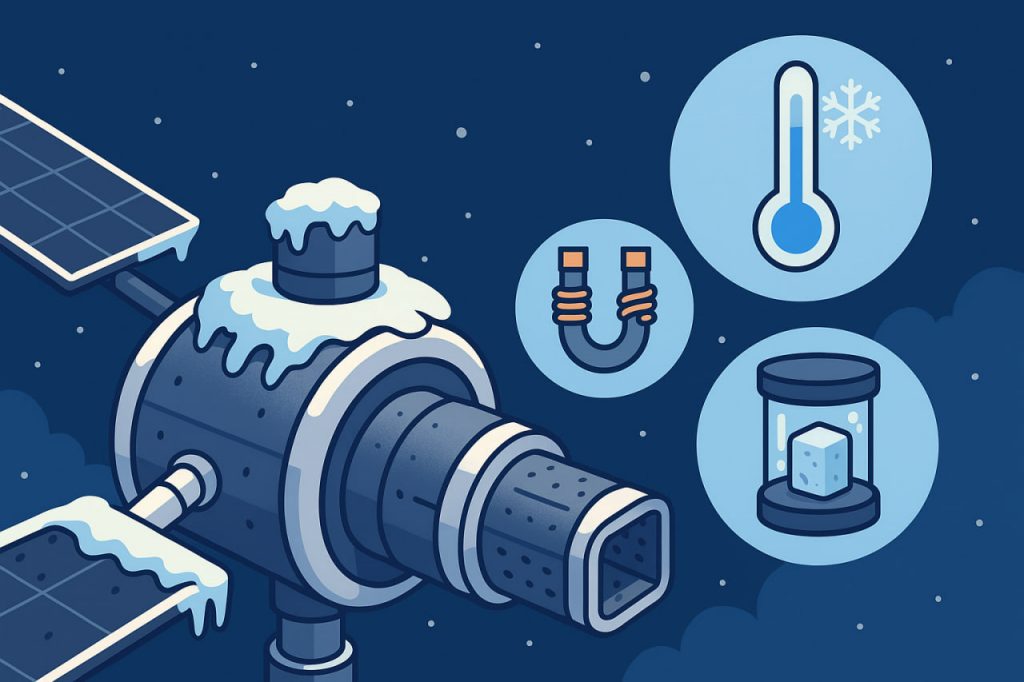−270°C is a temperature close to absolute zero (0 K), where atomic motion nearly ceases. Studying how materials behave in these extreme cryogenic conditions is crucial for space exploration, quantum computing, and superconductivity research. Most conventional materials become brittle, unstable, or lose their structural integrity at such low temperatures. However, specialized materials such as certain metal alloys, ceramics, and composites can retain strength, flexibility, or even gain remarkable properties like superconductivity. Understanding the response of materials under these conditions requires deep knowledge of thermodynamics, quantum effects, and crystal structure behavior.
What Happens to Materials at Cryogenic Temperatures
At temperatures near absolute zero, atoms in materials vibrate very slowly, and thermal energy is minimal. This greatly affects mechanical properties, such as elasticity, ductility, and tensile strength. In many metals, dislocation movement — which enables plastic deformation — becomes restricted, making them harder but more brittle.
Polymers and plastics generally become rigid and fragile, as their molecular chains lose mobility. Some glasses and ceramics maintain stability but may suffer from internal stress fractures. Even small impurities or micro-cracks can lead to catastrophic failure due to thermal contraction.
Superconductivity and Zero Resistance
One of the most extraordinary phenomena observed near −270°C is superconductivity. Certain materials, such as niobium-titanium alloys or yttrium barium copper oxide (YBCO), lose all electrical resistance when cooled below a critical temperature. This allows electricity to flow with zero energy loss, which is useful for powerful magnetic fields, MRI machines, and magnetic levitation trains.
This effect relies on quantum mechanics, as electrons pair up into so-called Cooper pairs that can move without scattering. Superconducting materials must be maintained at cryogenic temperatures using liquid helium or liquid nitrogen depending on the type.
Space Engineering and Structural Challenges
Satellites, space probes, and telescopes such as the James Webb Space Telescope operate in deep space, where temperatures drop below −270°C. Engineers must design components to survive thermal cycling, mechanical stress, and radiation. Titanium, carbon fiber composites, and special ceramics are often used due to their strength-to-weight ratios and thermal stability.
Joints, adhesives, and lubricants must also be specially engineered. Standard greases freeze or degrade, so dry lubrication or solid lubricants like molybdenum disulfide are employed. Even cables and insulation require materials that don’t crack or shrink excessively under cryogenic stress.
Cryopreservation and Biology
At first glance, living tissues seem incompatible with −270°C. Yet, scientists explore cryopreservation to freeze cells, organs, and even organisms at extremely low temperatures. The key challenge is ice crystal formation, which can rupture cell membranes.
To avoid damage, cryoprotectants are used to prevent ice formation and maintain cellular integrity. Although full-body preservation at −270°C remains theoretical, advances in vitrification and controlled cooling open possibilities for future applications in medicine, biology, and even interstellar travel.
Limitations and Innovations
Despite advances, very few materials can function at −270°C without modification. Even metals like steel become unreliable unless alloyed for cryogenic resilience. Research continues into nano-engineered materials, graphene structures, and ceramic-metal composites that could withstand these temperatures with less mass and higher efficiency.
Quantum technologies and deep space missions will increasingly depend on these innovations. The integration of material science, cryogenics, and quantum physics is driving new frontiers of engineering that operate in environments previously thought inaccessible.
Conclusion
Understanding how materials respond at −270°C is fundamental to modern science and technology. From superconducting circuits to space-based instruments, humanity’s reach into extreme environments depends on designing matter that remains functional when atomic motion nearly stops. As technology evolves, so does our capacity to control and harness the power of cold.
Glossary
- Cryogenics — study of materials at very low temperatures
- Superconductivity — state where electrical resistance drops to zero
- Thermal contraction — shrinking of materials when cooled
- Cryoprotectant — chemical used to protect biological tissue from freezing damage
- Vitrification — process of turning a substance into glass-like solid without forming ice
- Cooper pairs — quantum pair of electrons that enable superconductivity
- Thermal cycling — repeated expansion/contraction due to temperature changes


